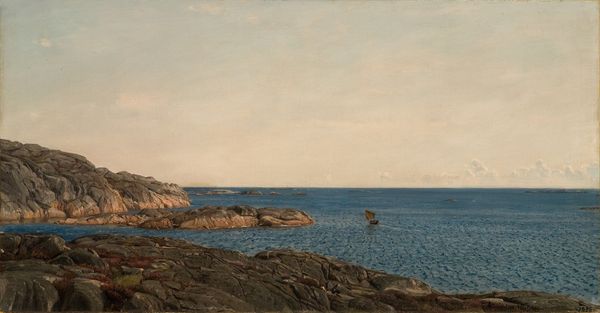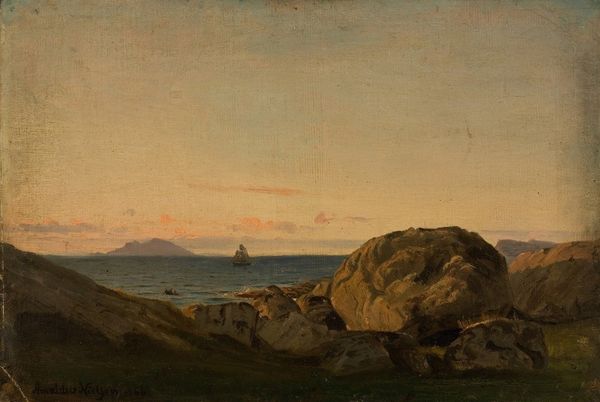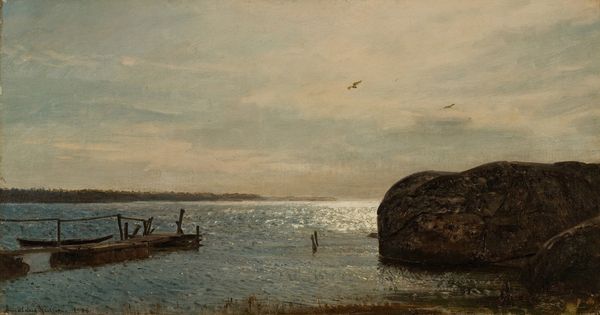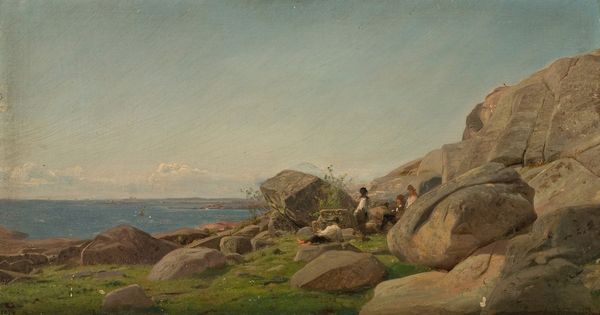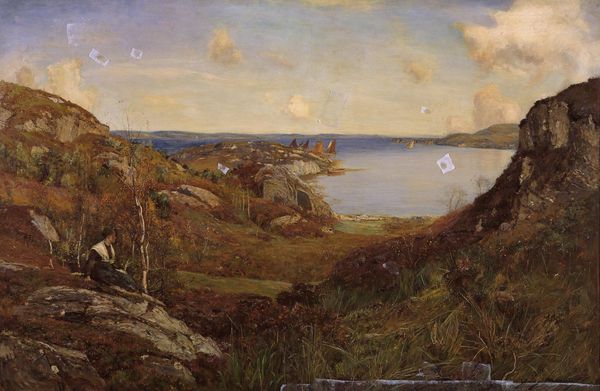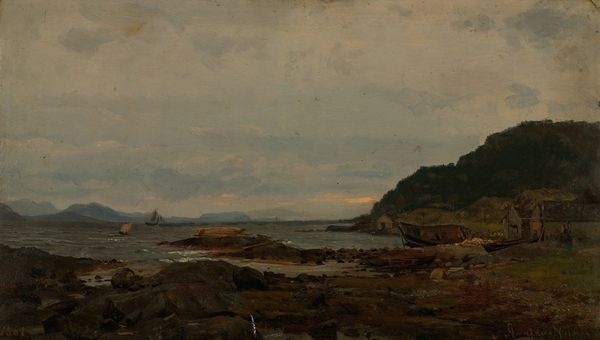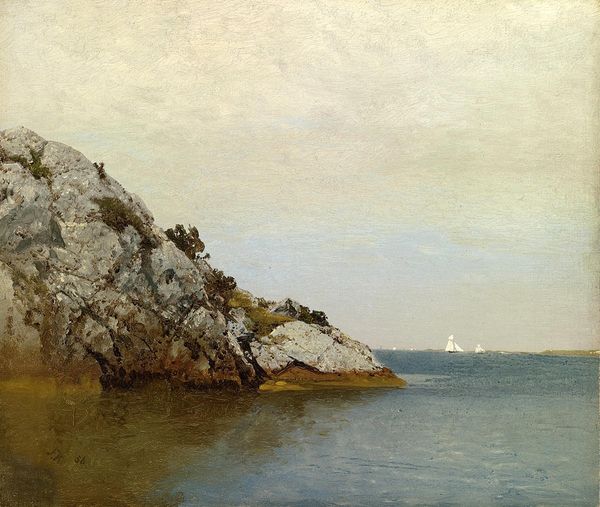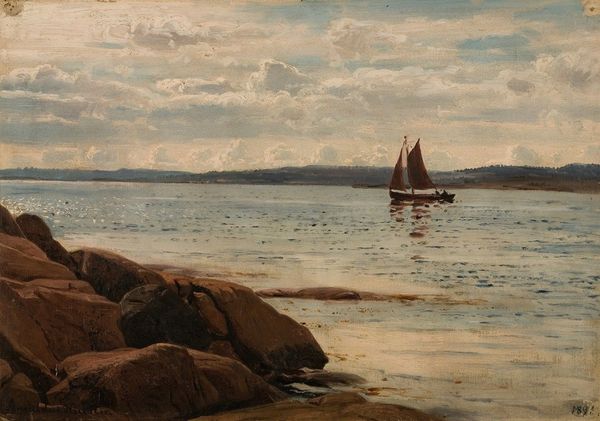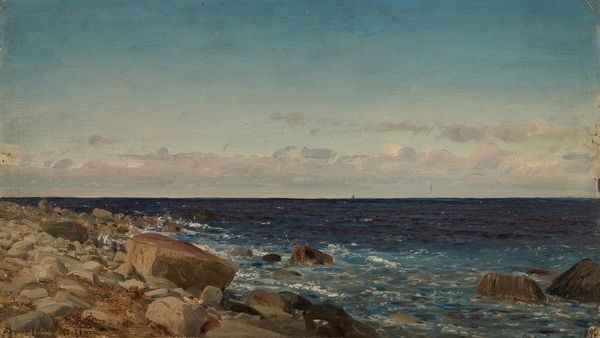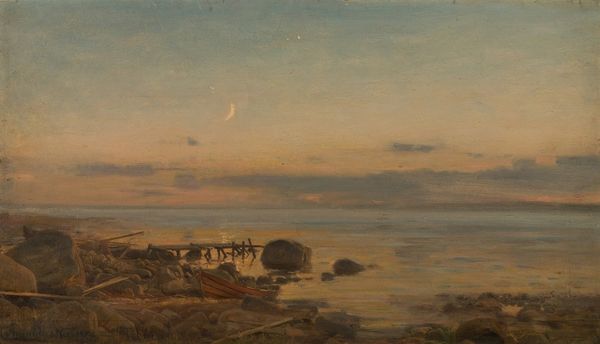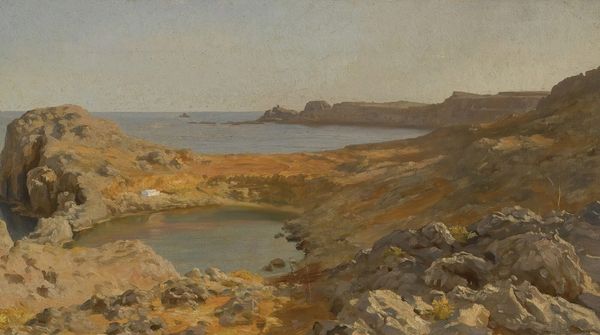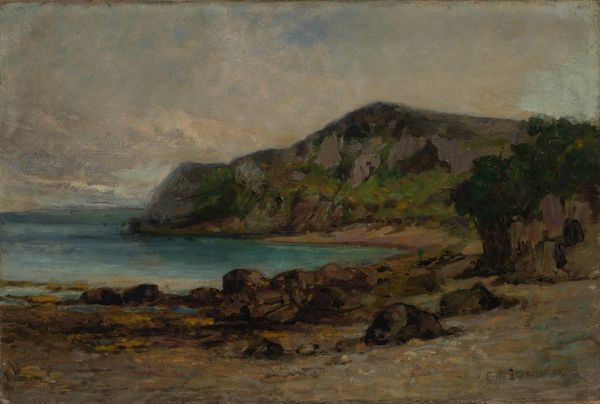
Copyright: Public Domain: Artvee
Editor: We’re looking at “En holme,” painted in 1895 by Amaldus Nielsen, seemingly using oil and watercolor. It’s remarkably serene – a quiet cove with a small boat nestled near some rocks. What strikes you most about this piece? Curator: What grabs me is how Nielsen uses a romantic lens to subtly address the shifts happening in Norway at this time. The late 19th century saw increased industrialization and urbanization, impacting rural life and traditional values. Nielsen’s scene seems almost idyllic. Does this suggest a form of cultural preservation or perhaps a yearning for a past fading away? Editor: I see what you mean. It’s very still. How does its exhibition history affect our understanding? Curator: The display of landscapes like this in national galleries, especially around this period, was tied to constructing a sense of national identity. Art played a pivotal role. Norway was in the midst of solidifying its independence. Do you think showcasing such scenes contributed to a shared idea of Norwegian beauty and heritage? Editor: Absolutely, and that almost idealized view could also mask some of the social tensions simmering beneath the surface. Were there debates about this type of representation back then? Curator: Precisely! Some artists and critics were pushing for a more unflinching portrayal of social realities. Landscape painting wasn't always seen as politically neutral. Did the focus on beauty distract from other urgent conversations? That’s one argument. Editor: This really makes me rethink how landscape paintings can be so much more than just pretty scenery. Thanks! Curator: It's all about understanding the context – seeing the painting as part of a broader cultural and political conversation. Always question whose story is being told and, importantly, whose is being left out.
Comments
No comments
Be the first to comment and join the conversation on the ultimate creative platform.
